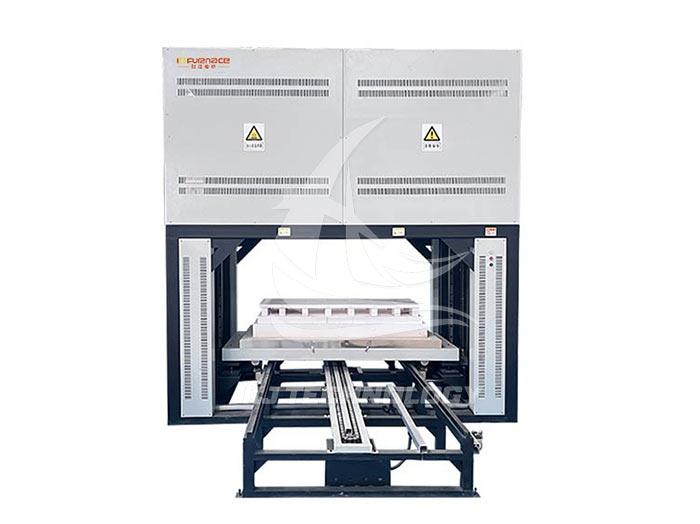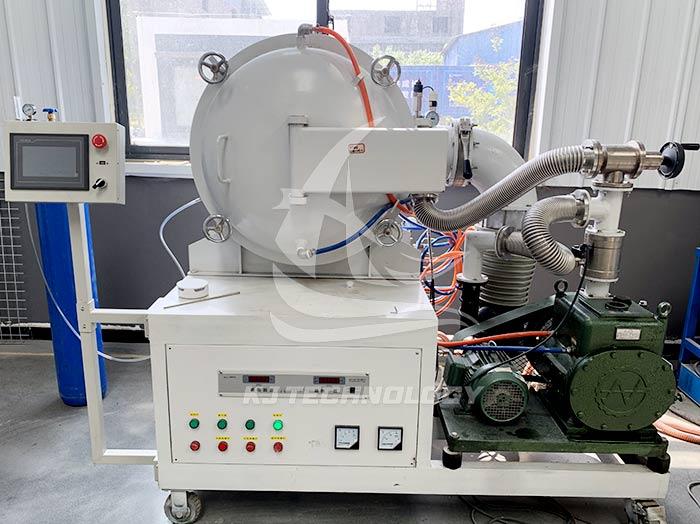Application of High Temperature Vacuum Brazing Furnace in the Tool Industry
 11-20-2025 Author: KJ technology
11-20-2025 Author: KJ technology
The application of high-temperature vacuum brazing furnace in the cutting tool industry is extensive and critical, mainly reflected in the manufacturing and repair of hard alloy cutting tools and PCD diamond cutting tools. Its core advantages lie in the non oxidizing welding environment, uniform thermal field control, and wide material adaptability. The following is an analysis of specific application scenarios and technical advantages:
1. Manufacturing of hard alloy cutting tools: achieving high-strength and defect free connections
Application scenarios
Brazing material: Taking YG8 hard alloy (cutting head) and 45 steel (cutting body) as an example, CuMnNi brazing material is used for vacuum brazing.
Process parameters: When the brazing temperature is controlled at 1000 ℃ and the brazing gap is 0.18mm, the shear strength of the joint is higher; After adding a 0.1mm Cu buffer layer, the interface bonding is good and the shear strength is further improved.
Effect: The vacuum environment avoids oxidation, the joint structure is uniform, there are no defects such as pores or cracks, and the tool life is significantly extended.
technical advantage
Non oxidation welding: Vacuum degree ≤ 10 ⁻ ³ Pa, isolate oxygen, prevent oxidation of cobalt (Co) elements in hard alloys, maintain tool hardness and wear resistance.
Uniform thermal field: Temperature uniformity ≤ ± 5 ℃, eliminating welding thermal stress, avoiding tool deformation, and ensuring tool accuracy.
High strength joint: The brazing material is metallurgically bonded with the base material, resulting in higher joint strength and meeting high load cutting requirements.
2. PCD diamond tool manufacturing: breaking through the welding problem of temperature sensitive materials
Application scenarios
Brazing material: The PCD composite sheet has a thickness of only 1.2mm and is temperature sensitive (brazing temperature should be ≤ 760 ℃). Low temperature solder paste containing active metal titanium (Ti) is used.
Process challenge: Manual induction brazing can easily lead to local overheating or uneven heating, causing thermal damage to the PCD layer or secondary melting of the welded area.
Solution: Vacuum furnace brazing achieves mass production by precise temperature control (± 1 ℃) and uniform heating (capable of welding more than 200 cutting tools at a time), and supports synchronous welding of multiple cutting heads to ensure consistency.
technical advantage
Low temperature welding: Under argon protection (vacuum degree ≤ 10 ⁻ ² Pa), avoid oxidation of active brazing materials, and achieve reliable connection between PCD and hard alloy substrate.
Batch production: Modular design supports multi station operation, and production efficiency is much higher than manual brazing.
High strength and consistency: The joint strength meets the cutting requirements, resulting in a higher product qualification rate and reduced manufacturing costs.
3. Tool repair and remanufacturing: extending the service life of high-end tools
Application scenarios
Repair objects: aviation engine turbine blades, high-end CNC cutting tools, etc., which need to be repaired due to high-temperature wear or cracks.
Process case:
Turbine blade repair: Nickel based brazing material is used to fill cracks at 1050-1200 ℃, resulting in lower high-temperature fatigue life after repair.
Tool edge repair: Restoring the geometric accuracy of the cutting edge through local vacuum brazing, with lower repair costs.
technical advantage
Non destructive repair: The vacuum environment prevents oxidation of the repair area and maintains the properties of the substrate material.
Precision control: multi-stage heating program and gradient insulation technology ensure uniform filling of brazing materials.
Environmental protection and energy conservation: No need for soldering flux, reduces harmful gas emissions, and meets green manufacturing standards.
4. Industry application trends and equipment selection suggestions
industry trends
High end: The demand for tool performance in fields such as aerospace and new energy vehicles has increased, promoting the development of vacuum brazing furnaces towards higher temperatures and higher vacuum degrees.
Intelligence: Integrating PLC control system and MES linkage to achieve automatic optimization of process parameters and data traceability.
Customization: Develop non-standard furnace design and multi temperature zone control technology for irregular cutting tools (such as complex curved cutting heads).
Equipment selection suggestions
Temperature range: For hard alloy cutting tools, choose models with a temperature range of 1200-1320 ℃, while for PCD cutting tools, a low-temperature furnace with a temperature range of ≤ 760 ℃ is required.
Vacuum degree: Priority should be given to equipment with a maximum vacuum degree of ≤ 10 ⁻ ³ Pa to ensure the welding quality of sensitive materials.
Automation level: It is recommended to equip a fully automatic furnace with a robotic arm and a visual inspection system for mass production scenarios.








